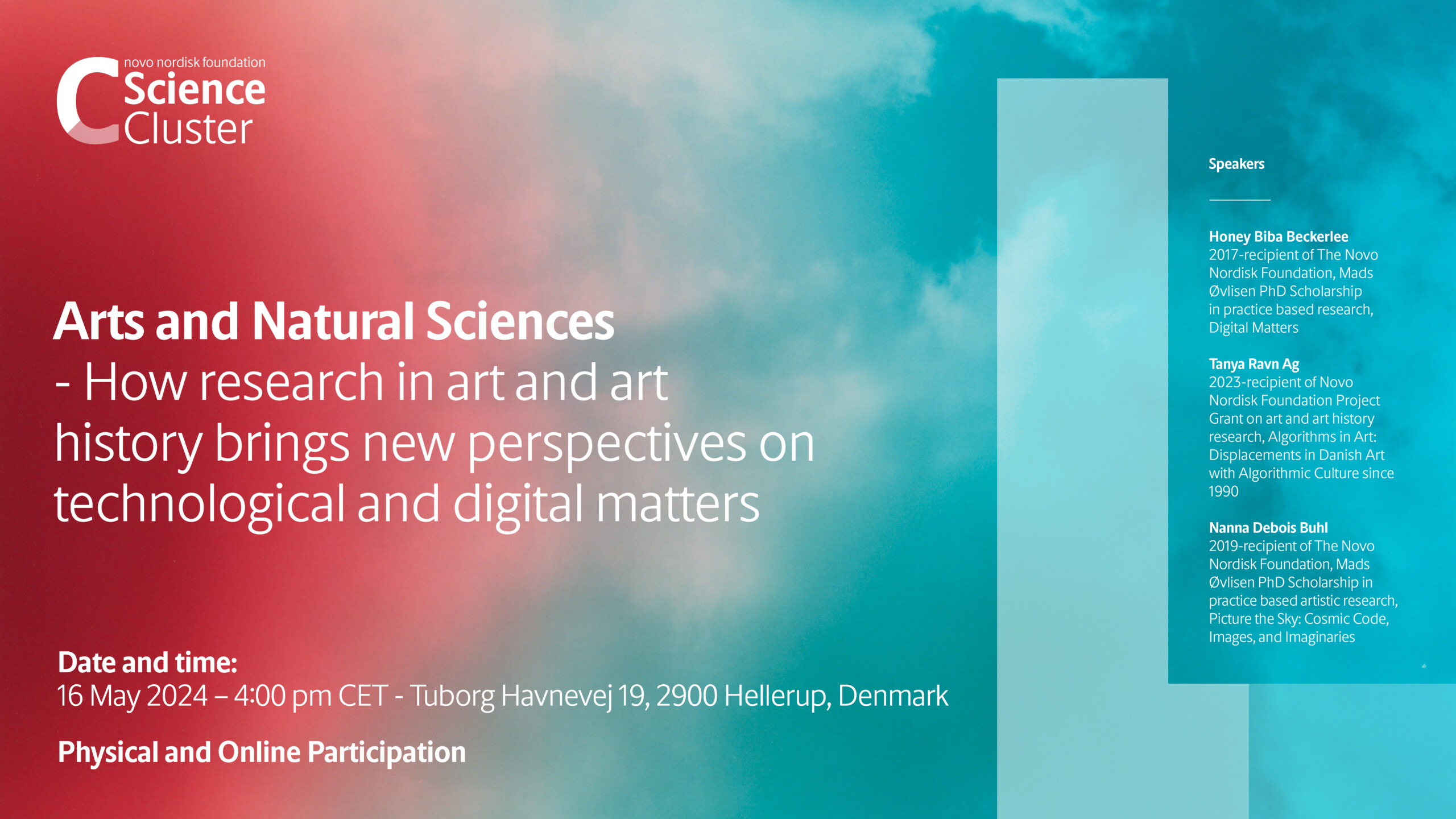Universitetsavisen
Nørregade 10
1165 København K
Tlf: 21 17 95 65 (man-fre kl. 9-15)
E-mail: uni-avis@adm.ku.dk
Forelæsning
Forelæsning — How does research in art and art history brings new perspectives on technological and digital matters? Please join us, as we explore some of these perspectives with three exciting researchers representing different ways of working with art and art history on questions of technology and digitalisation. Afterwards there will be networking with drinks and snacks for participants.
Date & Time:
Place:
Novo Nordisk Foundation
Tuborg Havnevej 19
2900 Hellerup
København
Hosted by:
Novo Nordisk Foundation
Cost:
Free
Did you know that since 1979, the Novo Nordisk Foundation has supported research in art, art history and the interdisciplinary crossroads between art and science? We recognise the important role that art plays in society, bringing new perspectives and helping to challenge existing dogmas. This includes the potential to encourage scientific curiosity and stimulating research within the natural and technical sciences.
Please join us for an evening of art and science, as we explore some of these perspectives with three exciting researchers representing different ways of working with art and art history on questions of technology and digitalisation.
Find new perspectives on the material footprint of our digital society with artist, PhD Honey Biba Beckerlee, who explores the complex correlations between raw materials, humans and technology in sculptures made of silicon waste and woven copper threads.
Follow Assistant Professor, Tanya Ravn Ag ,in exploring how the algorithm has been manifested in Danish art since the proliferation of digital technology in the 1990s, as both tool and culture, to understand current and future algorithmically driven dispositions in digital art, from the NFT to XR and AI.
And rethink well-known histories and materialities of space research with artist, PhD Nanna Debois Buhl, who uses photography, programming, and weaving to explore the role of women and other groups omitted in the traditional histories of the technological development.
